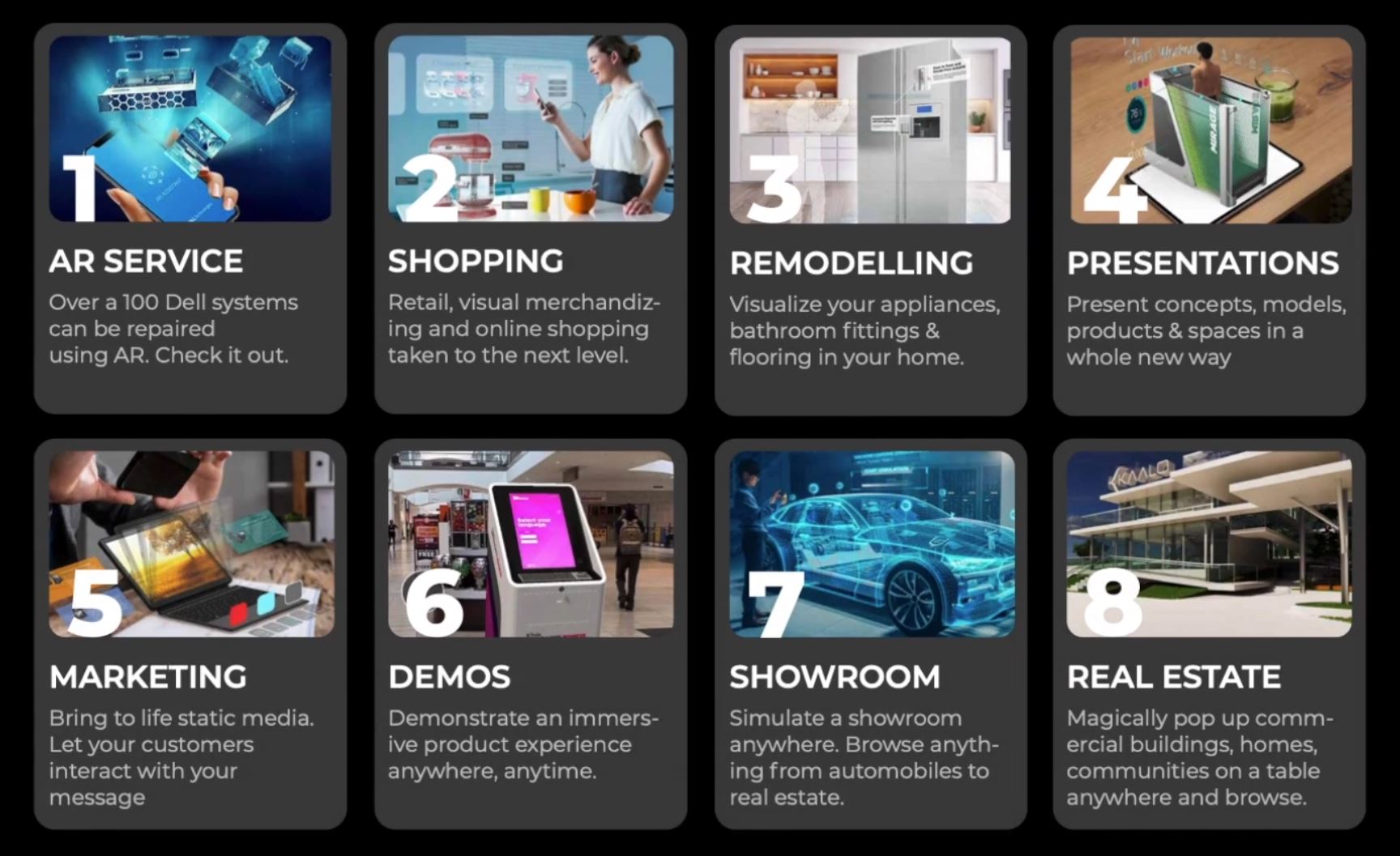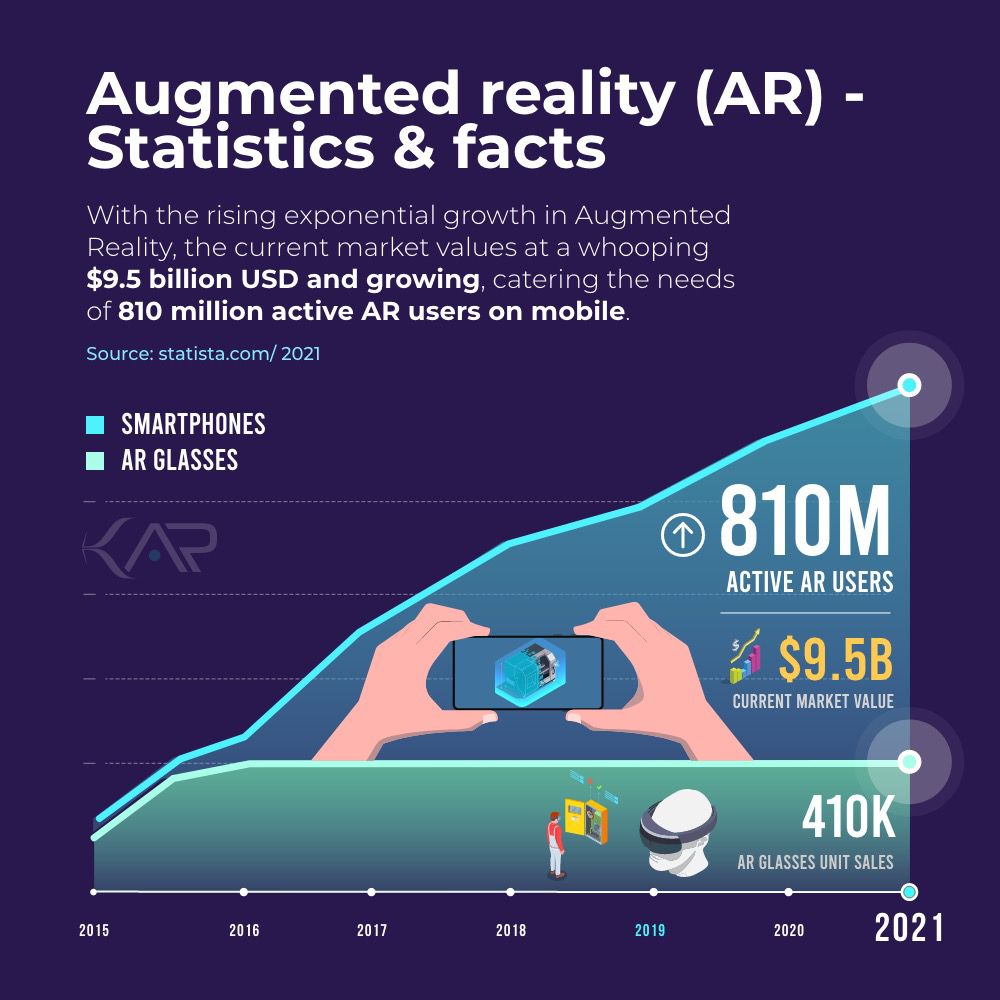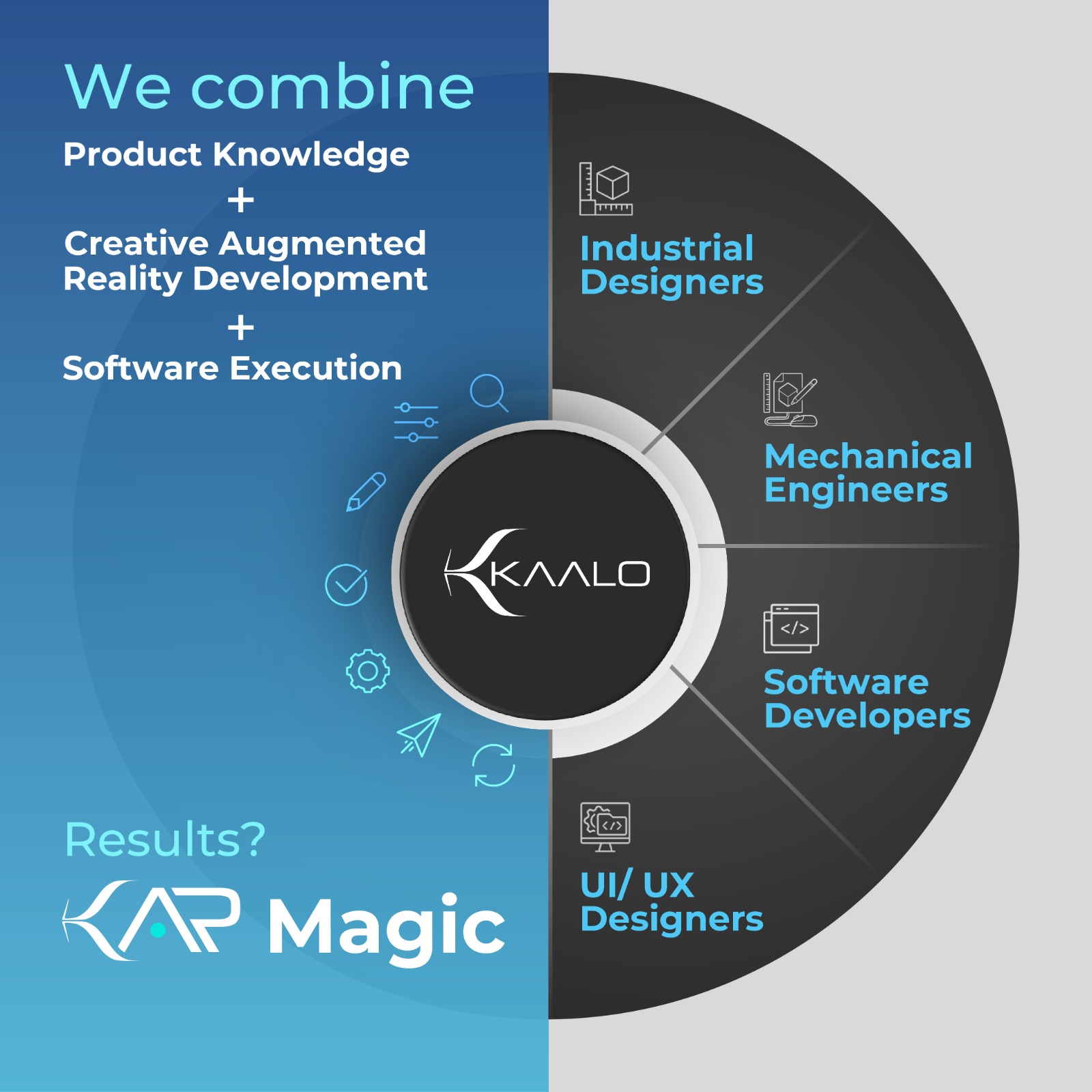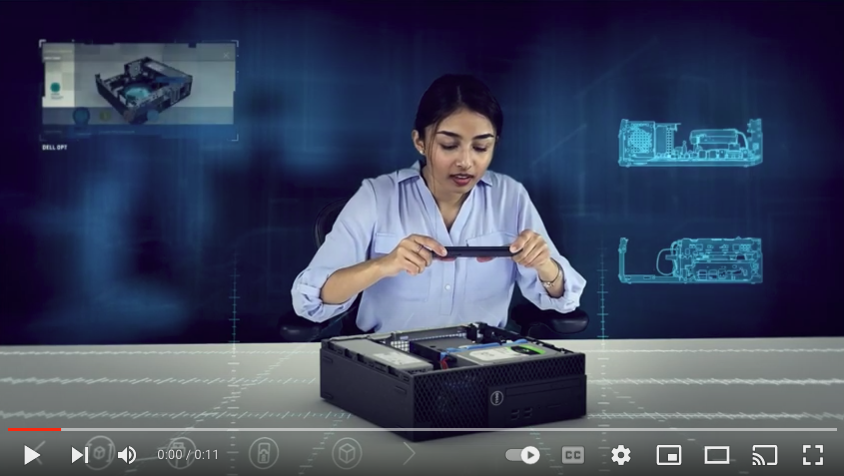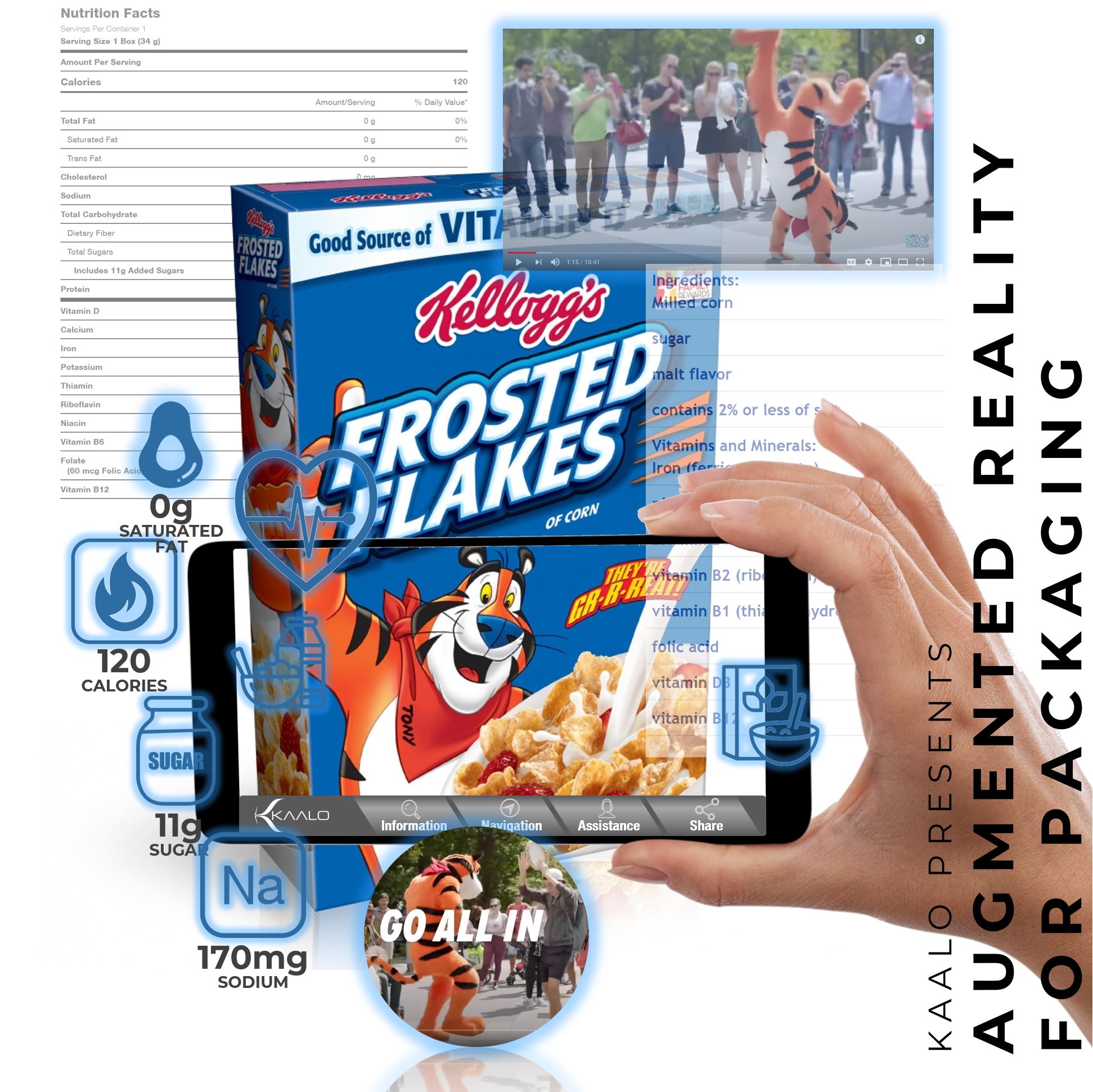How did Kaalo morph into a technology and design company? A classic Industrial Design team from the early 1990s with an open mind to the changing times and complicated client needs. Hardware design was not enough with the world of software taking over. Kaalo embraced software design and development to offer comprehensive solutions to clients. It was the explosion of social media, gaming and the virtual space that changed the face of product experiences and customer expectations. Kaalo got ahead of this macro trend back in 2017 by using Industrial Design techniques to Augmented Reality and Virtual Reality for solutions that served real world business needs. In 2020, when Covid hit, Kaalo’s remote AR based technical support solution was a “must have” for our clients. Now in 2023, Kaalo is recognized as one of the top AR companies offering a wide range of well designed, robust, secure solutions for a variety of industries including Electronics, Housewares, Retail, Health and Education.
#design #industrialdesign #augmentedreality #DesignAndTechnology #KaaloAR #team

